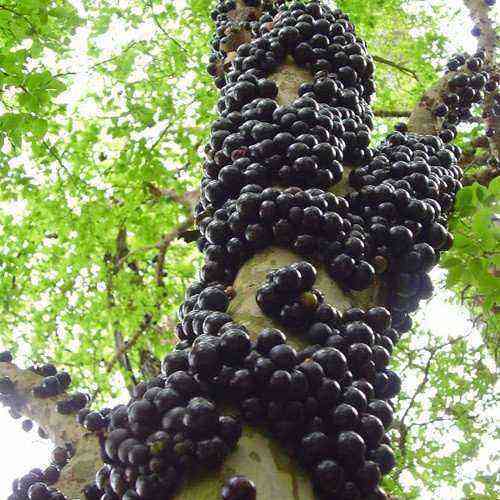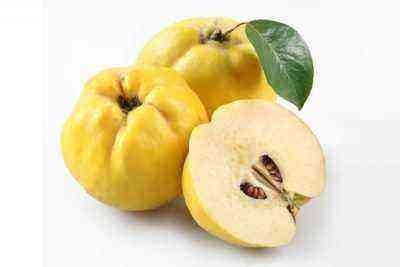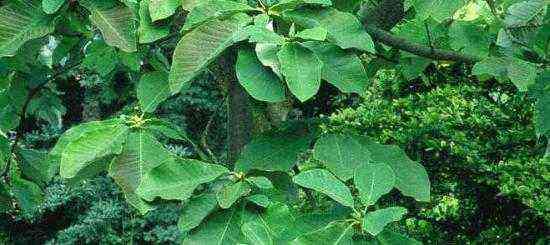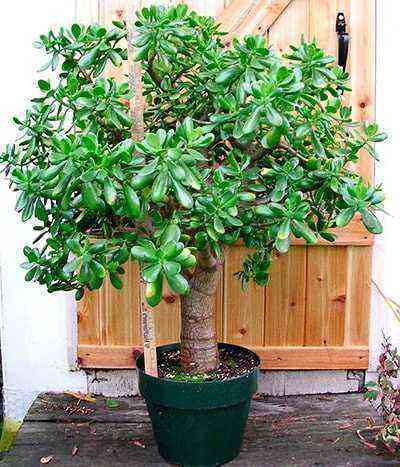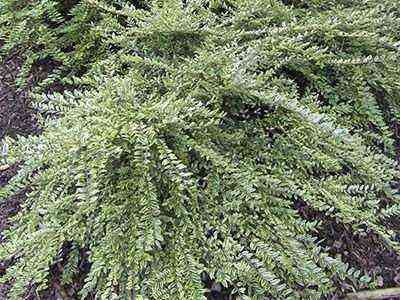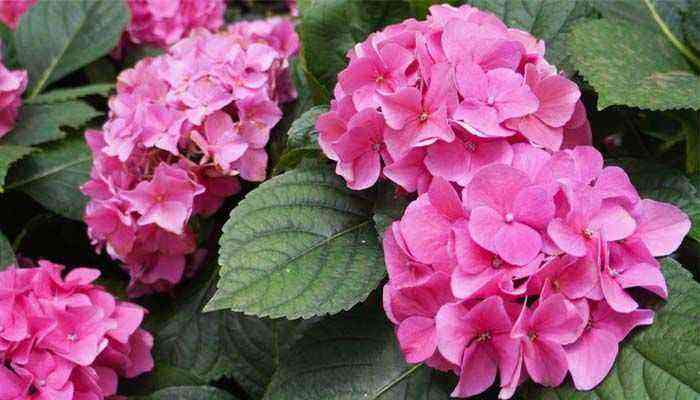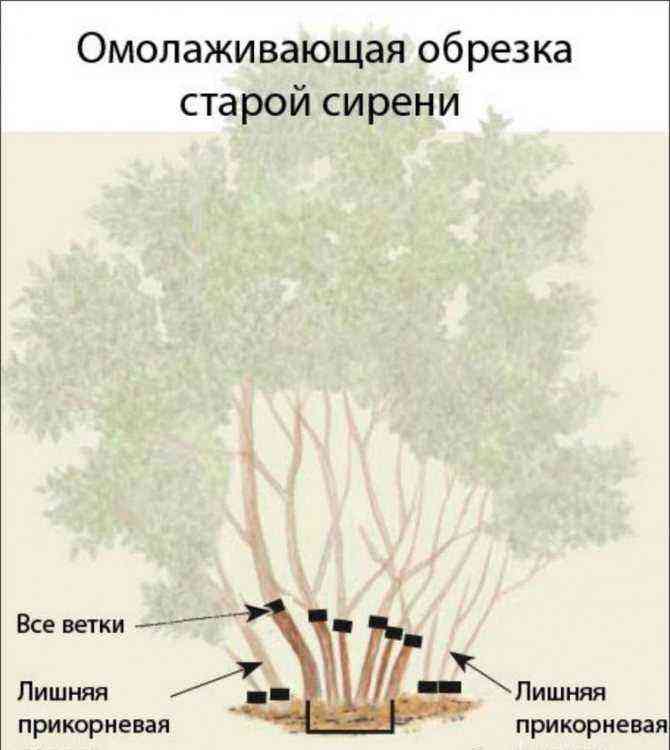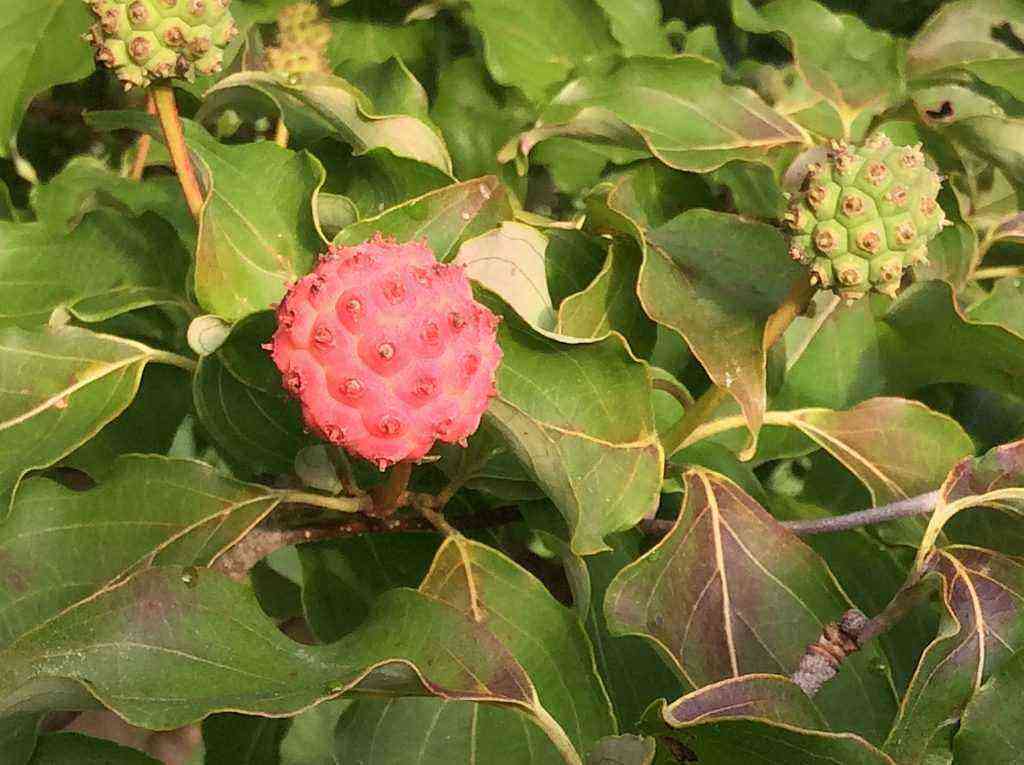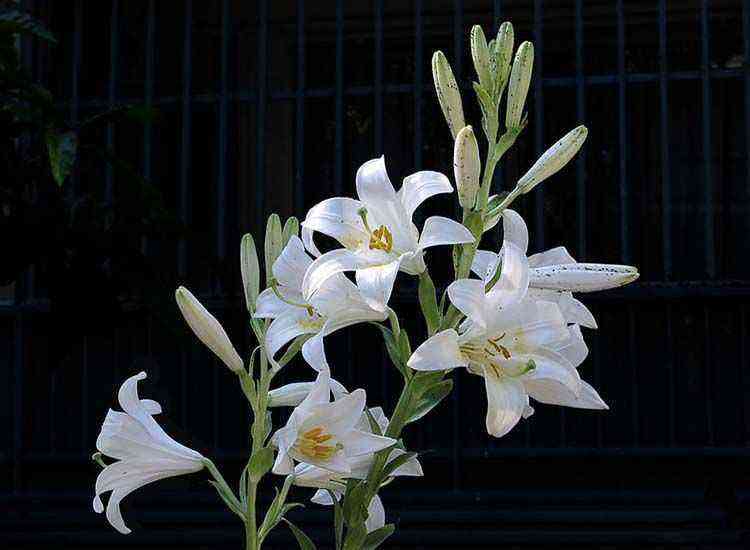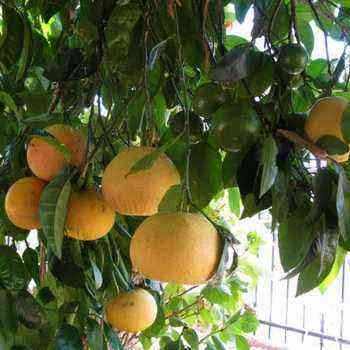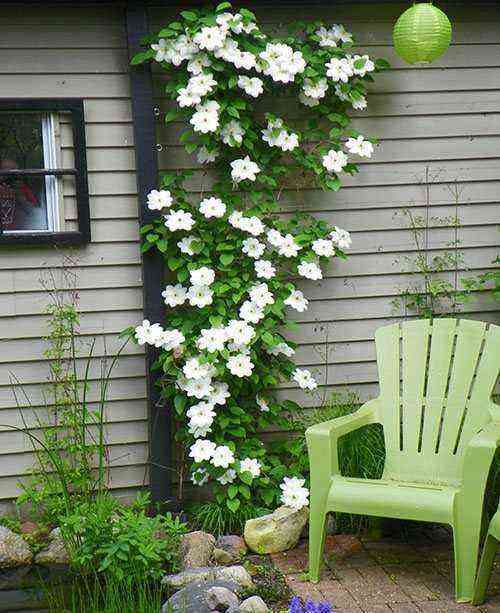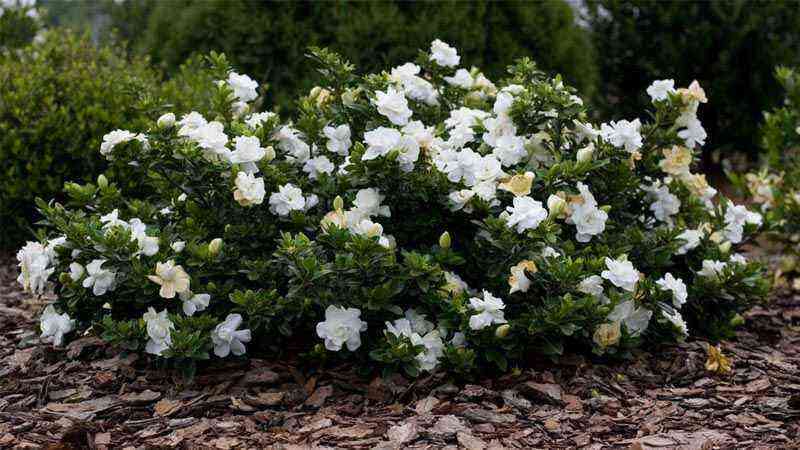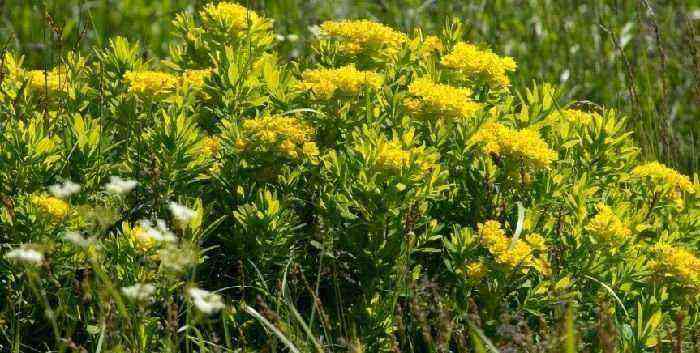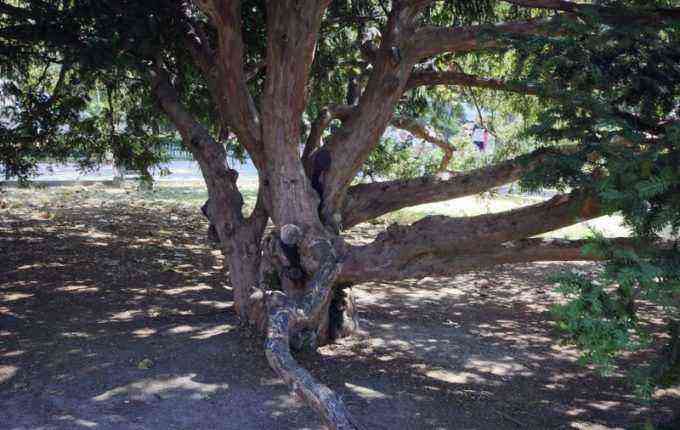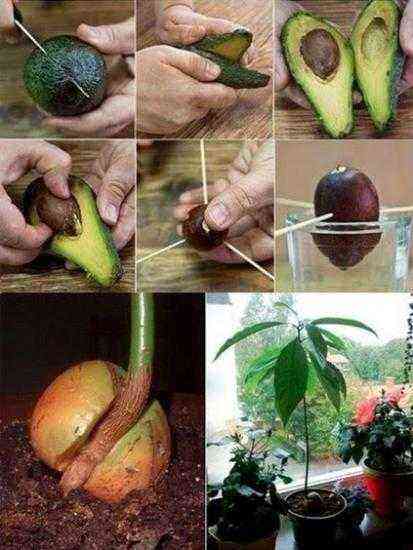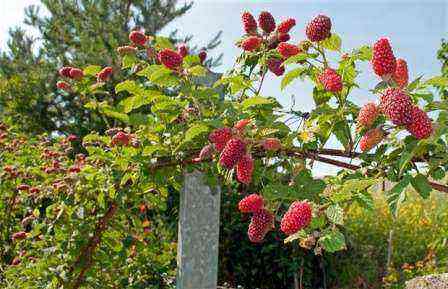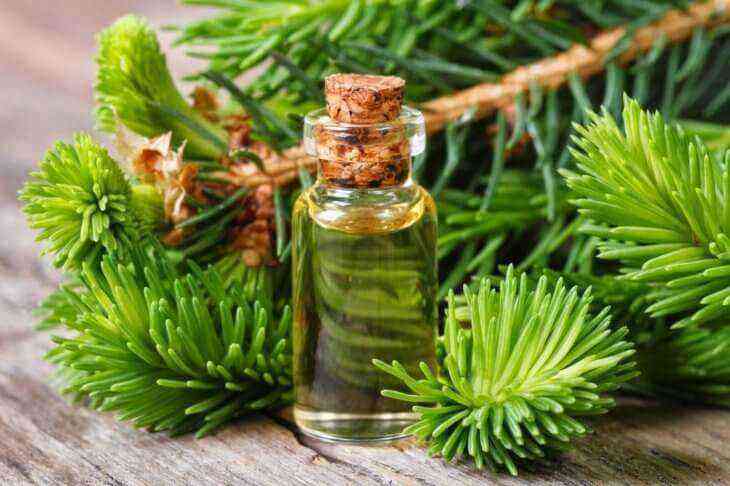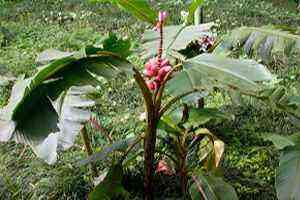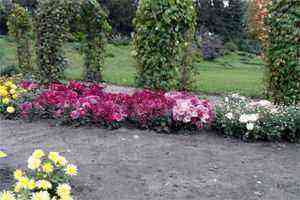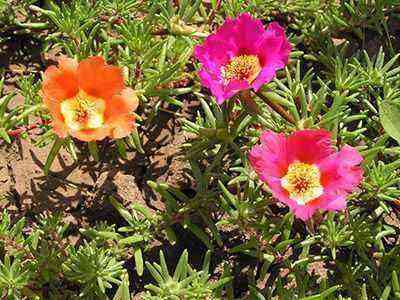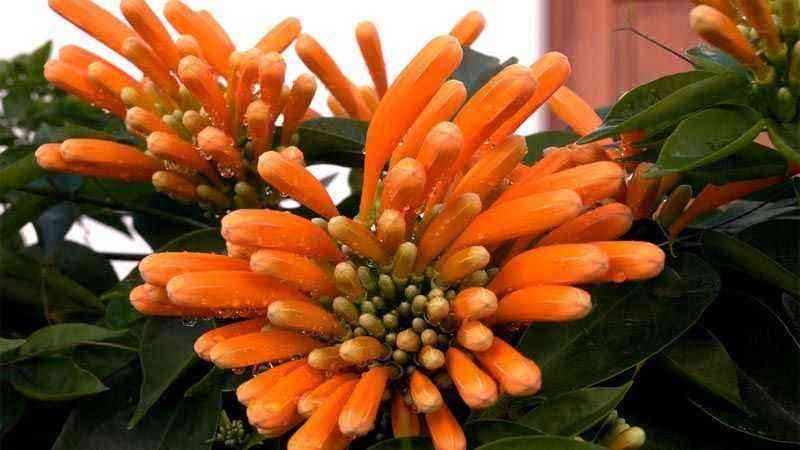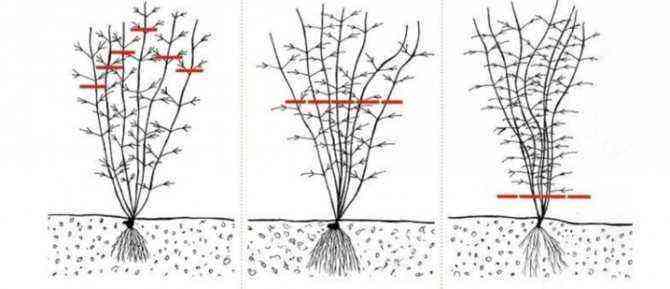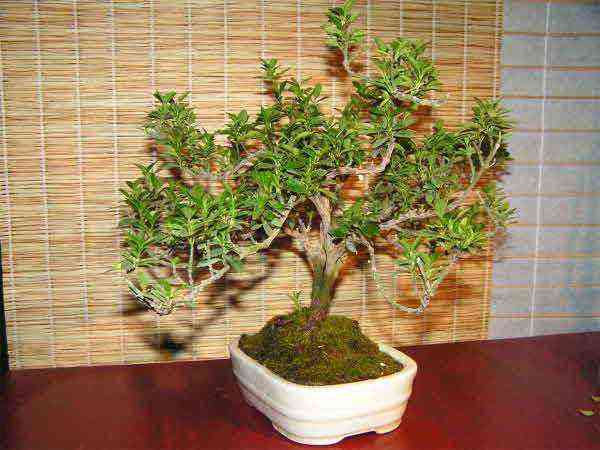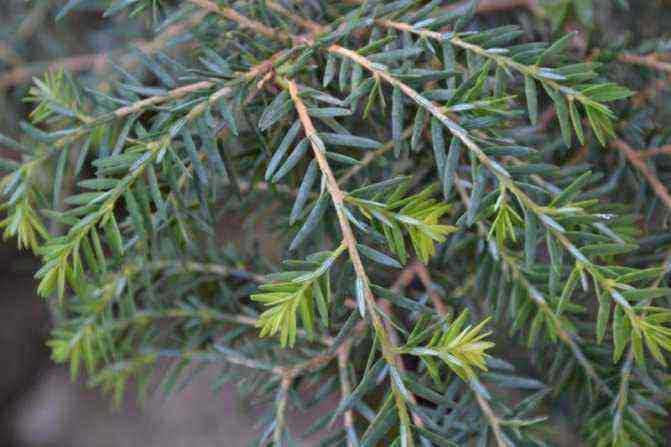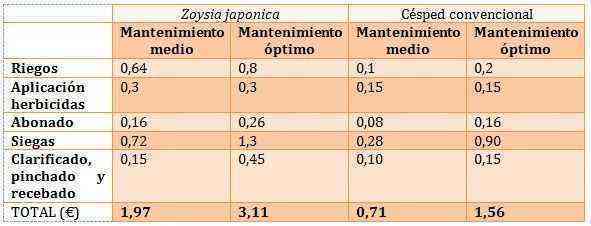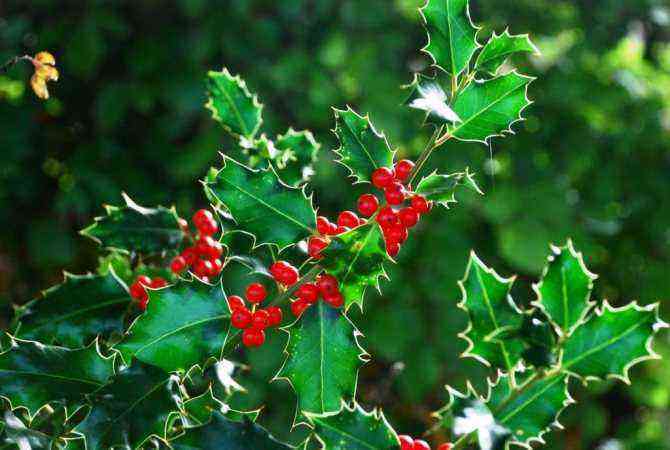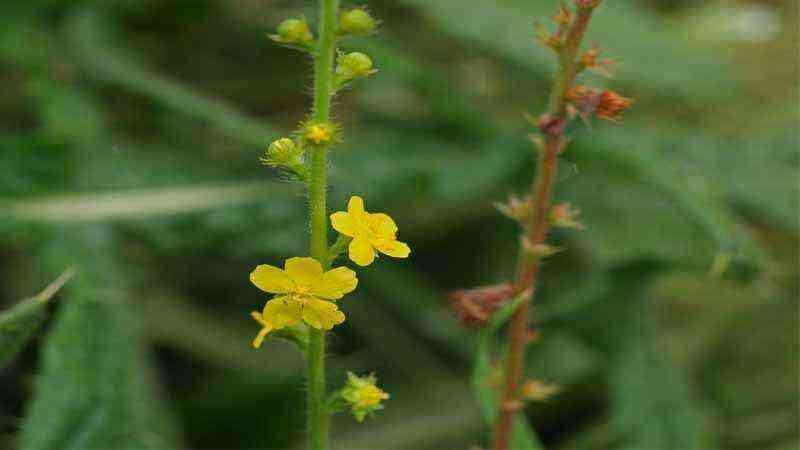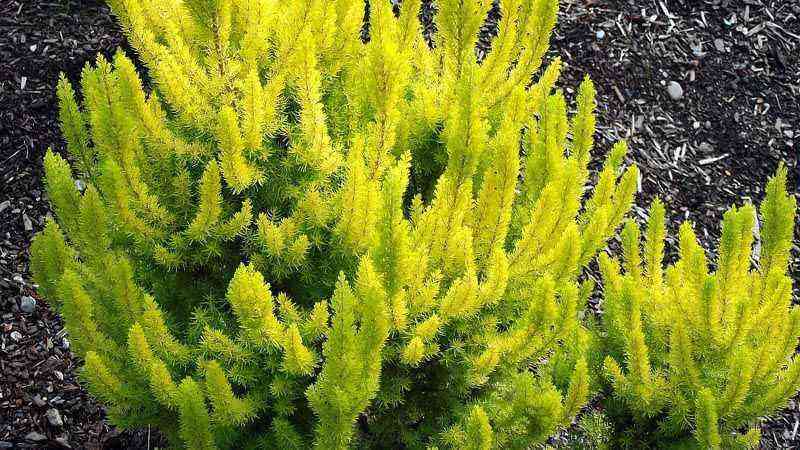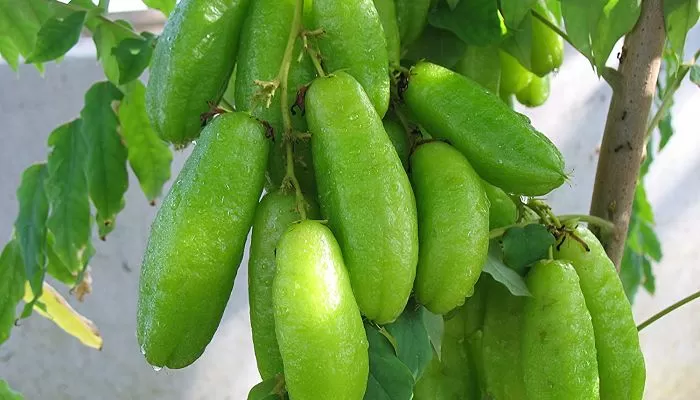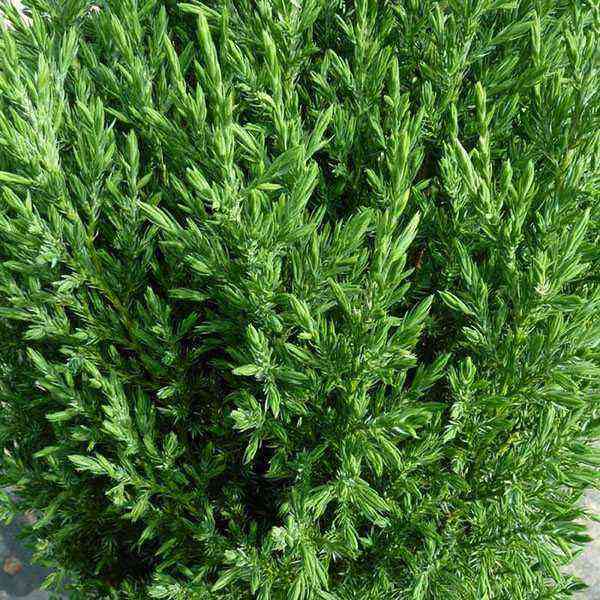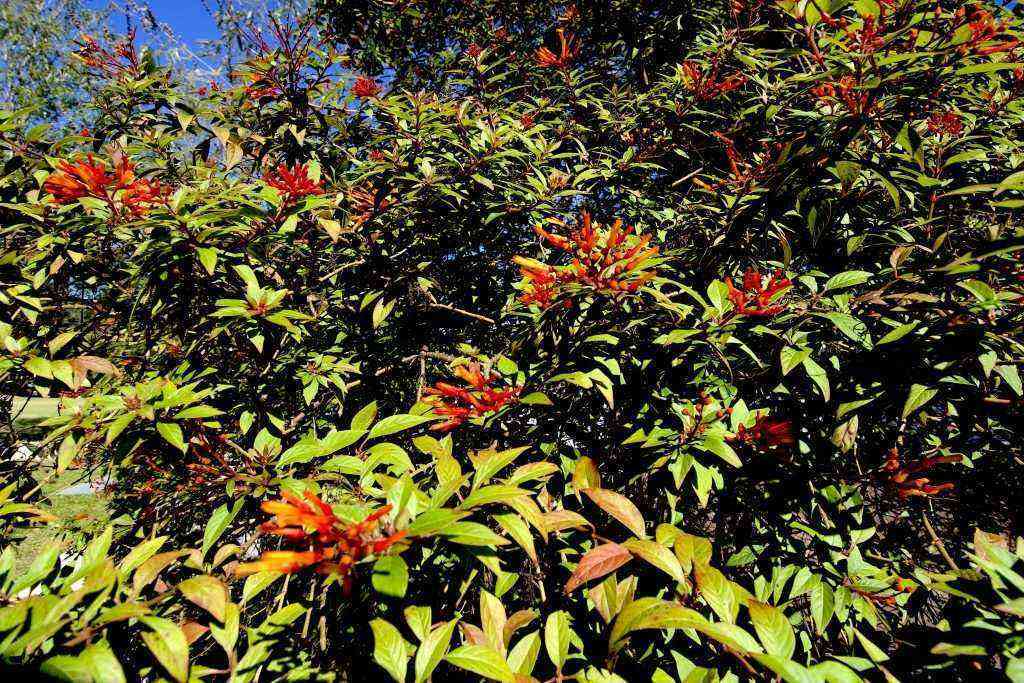Coin loosestrife is popularly nicknamed “snake root” for its ability to quickly seize territory
Description of the coin loosestrife
Monet loam, or monetary (in Lat. Lysimachianummularia), is a perennial plant of the Verbeinik genus, Primroses family. Creeping loosestrife stems, rooting at the nodes, reach a length of 80 cm. Color – light green, has no edge. They are densely sown with oval-rounded leaves, up to 3 cm in diameter. For its peculiar shape, similar to a coin, this type of loosestrife was called monetary. Flowers of bright yellow tone, also abundantly cover the plant along its entire length. Their long peduncle is located in the leaf sinuses. On the flower of the moneta loosestrife, there are 5 petals, shaped like a triangle or oval, with a narrowing towards the end. The rim diameter ranges from 18 to 30 mm.
The flower has 5 glandular stamens, which are half as long as the corolla, and one pistil. Flowering begins in May and lasts until August.
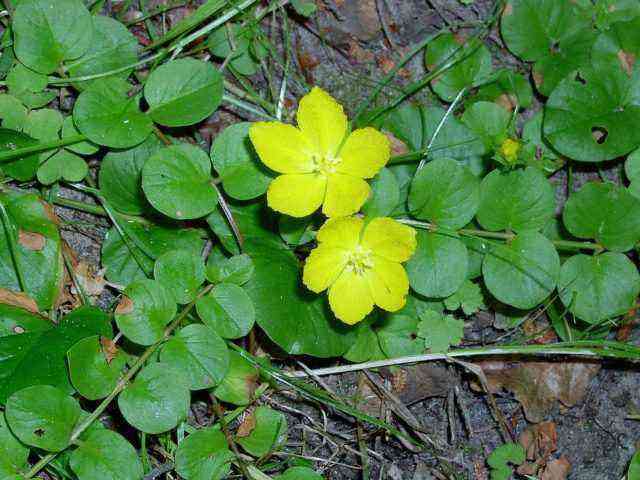
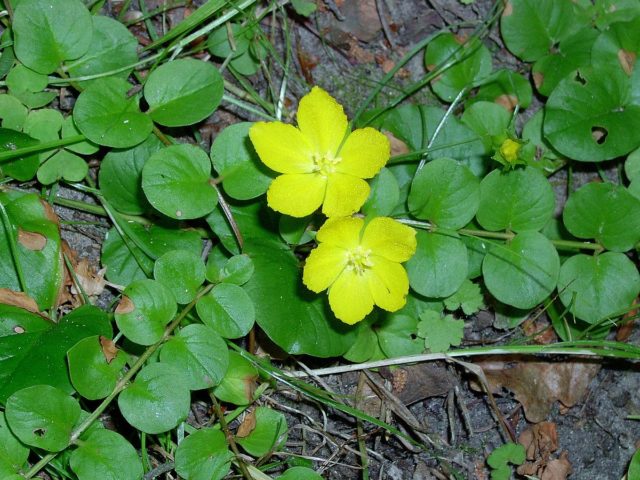
It is assumed that bees are attracted not by the smell of nectar, but by the fatty oils contained in the petals.
The plant is pollinated by bees. They collect oil from the petals, mix with pollen and use the raw material as food for the larvae. Fruiting begins immediately after flowering ends. The fruit is a rounded capsule with 5 leaves. The seeds are small.
Monet loam belongs to the group of ground cover and anti-erosion plants. It grows equally well on horizontal soil and on slopes.
Where grows
Monet loam is a wild plant that lives both in the forest and on the banks of reservoirs and rivers, even in swamps. The culture loves moist soil and a little shade, so it can often be found in ravines.
The habitat of the plant is the entire European part of Russia, the North Caucasus. On the territory of Western Siberia, it is found as an invasive plant.
Chemical composition
Monet loam is rich in saturated acids and other useful substances. Stems, leaves and roots contain flavonoids – natural dyes with tanning and antibacterial properties. In the above-ground part of the monetary loosestrife are concentrated:
- Some phenol carboxylic acids, namely caffeic and chlorogenic. They have a powerful antiseptic effect.
- Anthocyanins, which help reduce inflammation, improve intestinal barrier functions.
- Nitrogen-containing compounds: acetylcholine and choline. The latter is used for liver diseases and atherosclerosis.
Lostweed root is also rich in catechins, which are powerful antioxidants.
Characteristics and description of the plant
Verbeynik (Lysimachia L.) is a genus of plants belonging to the Primroses family, which includes about 200 species. They are quite widespread in the northern hemisphere in temperate and subtropical regions, often found in China (about 130 species). A typical species is the common verbeynik (Lysimachia vulgaris L.).
This perennial grows wildly in ditches, along forest roads, on rocky soil and in stagnant water. Prefers swamp forests and peat bogs. Traditional medicine uses loosestrife to treat rheumatism and skin diseases. It was also used to dye fabrics yellow, green, brown and black.
Morphology
These are evergreen perennials and shrubs with a very diverse crown. Broad lanceolate leaves are formed on high stems of 1,5 meters.
The loosestrife blooms from June to August. Golden yellow or white flowers create wide inflorescences. The flowers are 5-petaled, in long clusters or panicles, usually yellow or white, sometimes pink or purple. A strong, branched rhizome forms long underground roots.
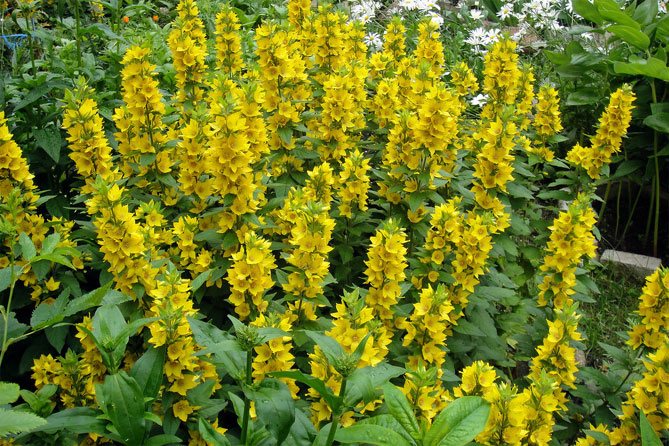
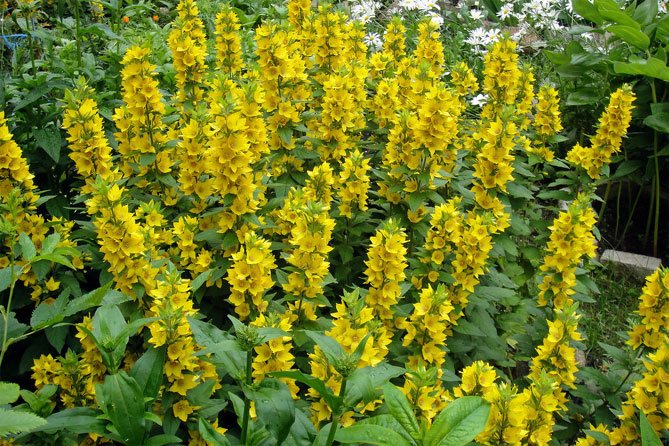
Types
Verbeinik is willingly planted in flower beds, near ponds. The gardens can be used to plant different types of plants, which are characterized by low requirements and abundant flowering. Loafers are valued for their decorative qualities. The family includes about 200 species.
The most common types of Russian flora grown in gardens:
- Common loosestrife (Lysimachia vulgaris L.);
- В. кистецветный (Lysimachia thyrsiflora L.);
- B. oak (Lysimachia nemorum L.);
- B. point (Lysimachia punctata L.) – domesticated anthropophyte;
- B. coin or coin (Lysimachia nummularia L.);
- V. lily of the valley (Lysimachia clethroides Duby).
Ordinary
The species Lysimachia vulgaris L. is distributed in Europe, North Africa, Asia (Western Asia, Siberia, the Caucasus, Kazakhstan, Tajikistan, Uzbekistan, Kyrgyzstan, China). In Russia, it is found in the lowlands, on the lower slopes of the mountains.
The common loosestrife reaches a height of 15-100 cm, topped with a panicle of yellow flowers. Develops long roots. The stem is erect, pubescent, branched. Leaves are oblong-ovate, opposite, less pubescent than the stem, up to 14 cm long. Inflorescences are formed in the upper corners of the stem leaves. The inflorescence is a large crown, up to 1 cm in diameter. The petals of the flower crown are ovoid, yellow. The flower has five stamens, 2 stamens are shorter than the rest. The fruit is a capsule up to 5 mm in diameter.
Photo. Common loafers
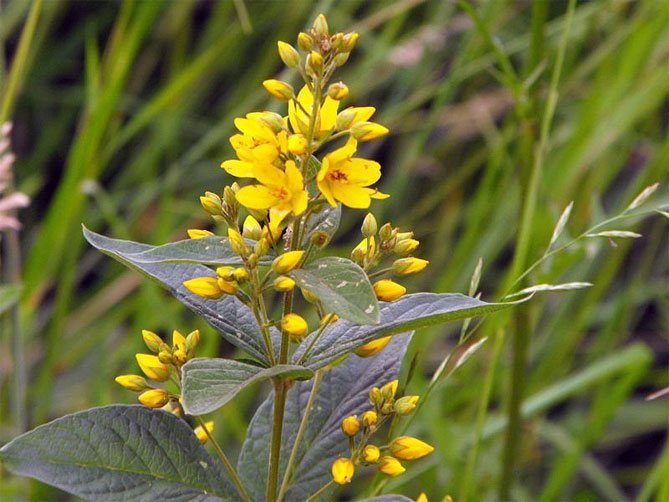
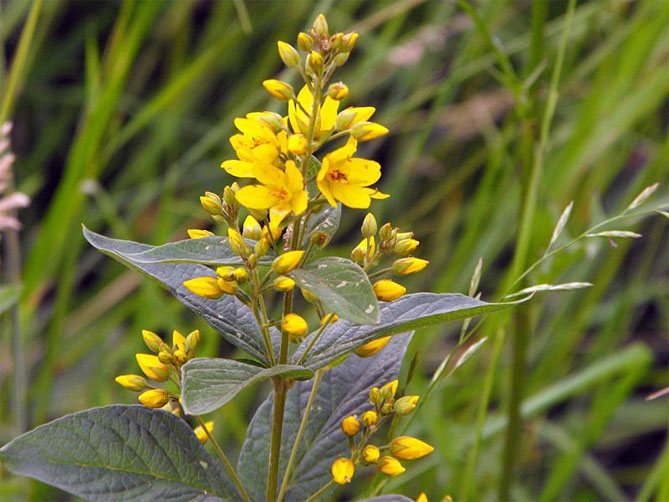
Perennial blooms from June to August. The seeds are spread by the wind. It grows in nature along the banks of reservoirs, in low-lying peat bogs, in drying reservoirs, ditches, swampy forests, thickets. More often found on moist sandy loams and silty deposits or heavy clays and loams, avoids calcareous soils. Prefers moderate climatic conditions, neutral, moist soils.
Verbeynik is considered a medicinal plant. It is used in folk medicine as a diuretic, anti-inflammatory, antibacterial, the simplest antifungal and antiviral agent. Increases mucus secretion, the process of absorption of nutrients from the intestines into the blood, stimulates the secretion of gastric juice, bile, intestinal juice.
For decorative purposes, it is used to fill the edges of reservoirs. In the past, its leaves were used in the national economy to obtain yellow and green dyes for fabrics.
Cartilage
Lysimachia thyrsiflora (lat.Lysimachia thyrsiflora) is a plant used for growing near stakes, ponds. The perennial grows wildly and can be successfully used for the arrangement of rural and naturalistic gardens. The species has an erect stem, growing to a height of 70 cm. The stems are surrounded by lanceolate leaves. Small yellow flowers are collected in bunches. Blooms from May to June.


Spot
Lysimachia punctata is one of the most popular species. This perennial plant is found at the edge of humid forests. Perennial grows to a height of 100-120 cm. Creates straight, angular stems, covered with lanceolate-oval leaves. The flowers are small, yellow, collected in several pieces in the axils of the leaves. Blooms from June to August. It is often used to create high ridges (grows in the shade), decorate the edges of reservoirs. The species is used in gardens to quickly cover large areas.
Alexander is a Lysimachia punctata cultivar that grows to a height of 80 cm. From June to August it blooms with yellow flowers that look beautiful against a background of green leaves with creamy edging. The variety is often grown in a garden near water bodies, in damp places.
Coin-shaped
Coin (coin) loosestrife is also called Meadow tea (lat.Lysimachia nummularia). Can grow in swamps. It can be grown as a ground cover – the plant produces long shoots reaching 60 cm. It grows in the shade – under the crown of trees. It can be used as a decoration for rockeries, flower beds, ponds. The plant is curly, decorative with leaves (oval, light green or yellowish – for example, in the “Aurea” variety), and flowers (yellow with a radiant shape). The perennial blooms from June to August with small yellow flowers.
The creeping loosestrife perfectly covers damp and shady areas of the garden, replacing lawns. Used in wastelands, shady areas of rockeries, on garden paths.
Photo. Loose mint
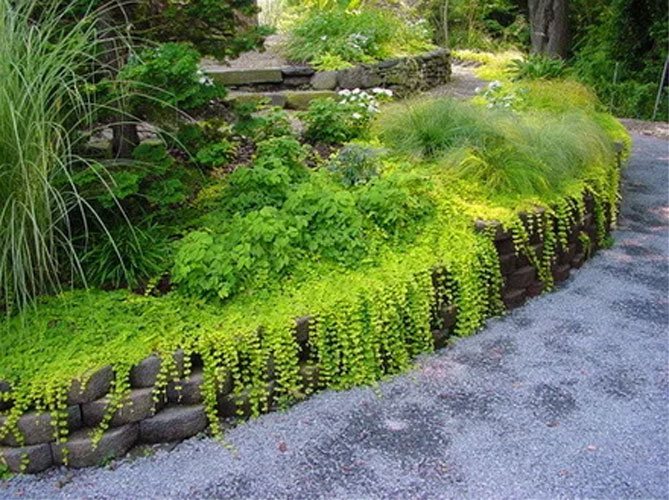
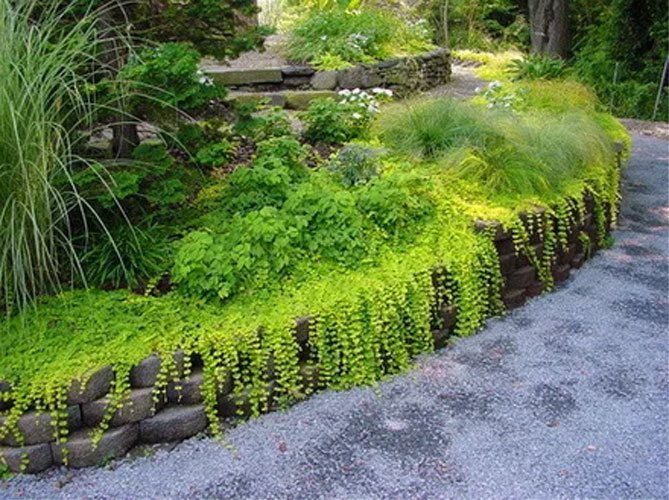
The loosestrife variety “Aurea” is a creeping perennial with golden leaves and star-shaped golden yellow flowers. In the garden, it is used in light and shady positions. Quickly creates a dense golden veil, brightening the dark corners of the garden.

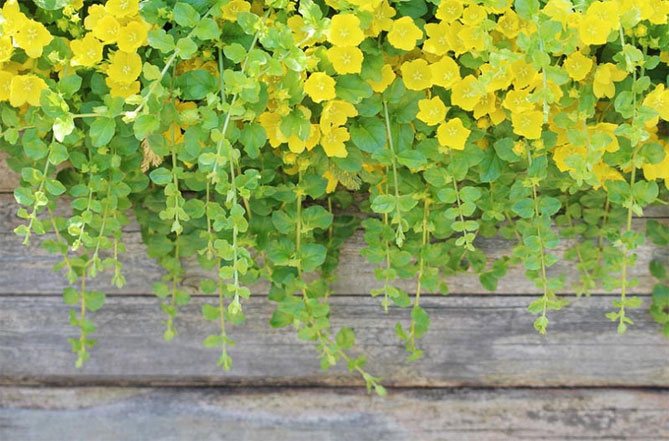
Goldilocks is a groundcover, attractive plant. Light yellow flowers, shoots densely covered with round golden yellow leaves, blooms from May to July.
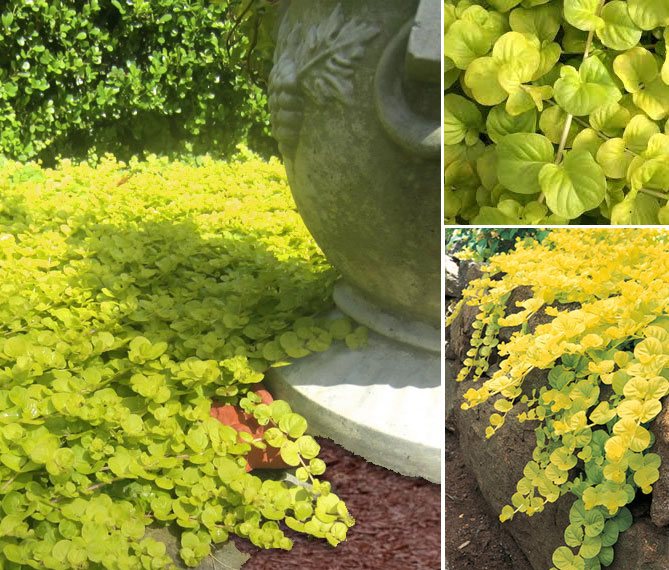
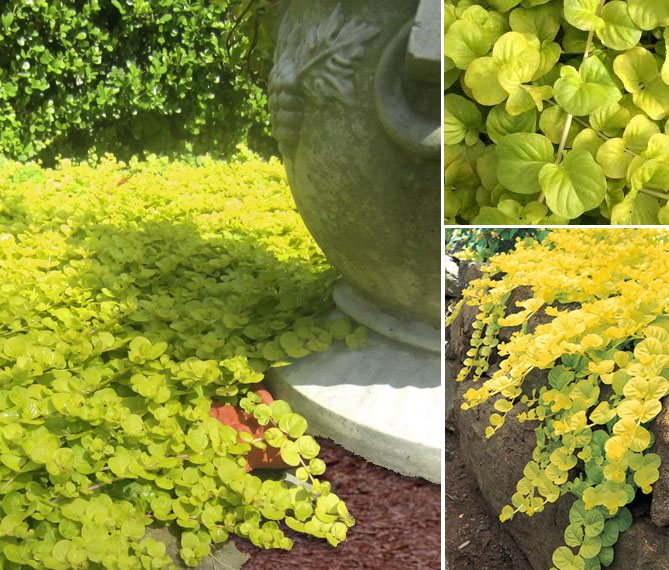
Lily of the valley
Lily of the valley or lily of the valley, cage-shaped (lat.Lysimachia clethroides), came from the Far East, homeland – Japan, China. In its natural environment, perennial grows in humid forests, ravines, sunny mountain slopes, up to an altitude of 2100 m above sea level.
The species reaches a height of 60-90 cm, has long lanceolate leaves. In the upper part of each shoot, long inflorescences grow – clusters. Unlike other species, lily of the valley flowers are white. Snow-white flowers up to 12 cm in diameter are enclosed in dense arched inflorescences. Blooms from July to September. Looks good planted in flower beds and on the lawn. It is worth planting the plant in large groups. It is a valuable specimen in oriental gardens.
Photo. Lily of the valley
Ciliated
Ciliated loam (Lysimachia ciliata) is an ornamental perennial with yellow flowers with red markings. Flowers appear in June, decorate the garden until August, grow on tall stems, reaching a height of 100-120 cm.
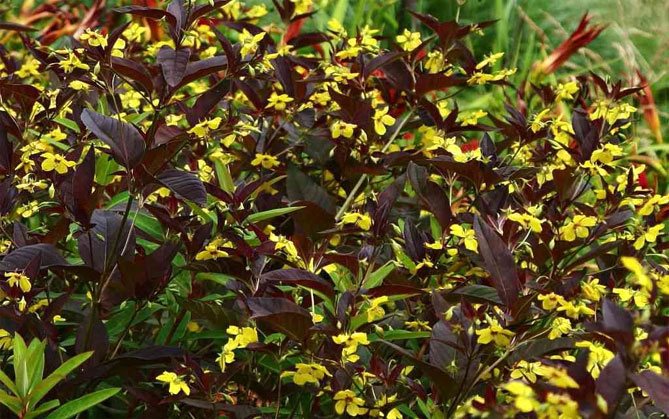
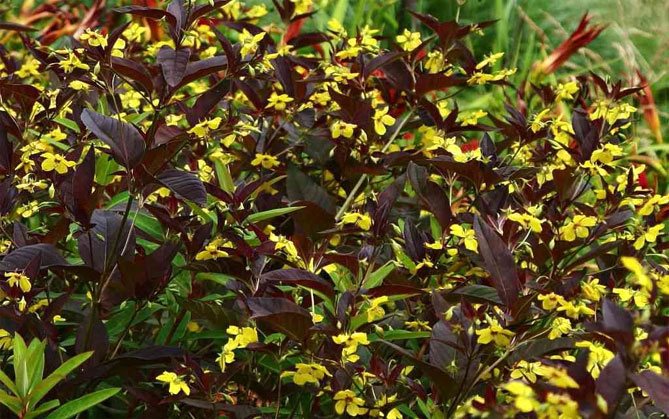
Loose worm in landscape design
The use of loosestrife in horticulture is due to its creeping shoots, which, when they grow, look like a huge yellow-green carpet. It is planted in shady, humid corners of the site, where it serves as a lawn. A widespread ampelous method of planting a coin loosestrife: shoots hanging from hanging pots and pots will beautifully decorate an outdoor outdoor gazebo.


Growing a coin loosestrife in a flowerpot will take a minimum of effort and time, but the result is worthy of attention.
Monet loam has several types:
- Loose mint Aurea. It is a perennial plant with vibrant golden green foliage. Inflorescences, red buds, appear in July, and with a lack of light only at the end of September. This species is very hardy: it is not afraid of either drought or excessive moisture. The Aurea variety is frost-resistant and easily recovers from mechanical damage.
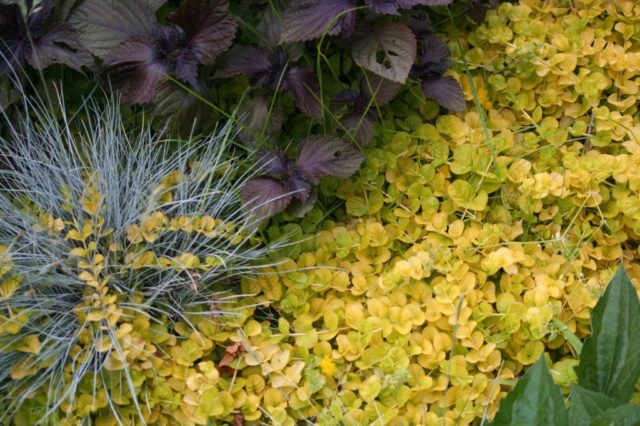
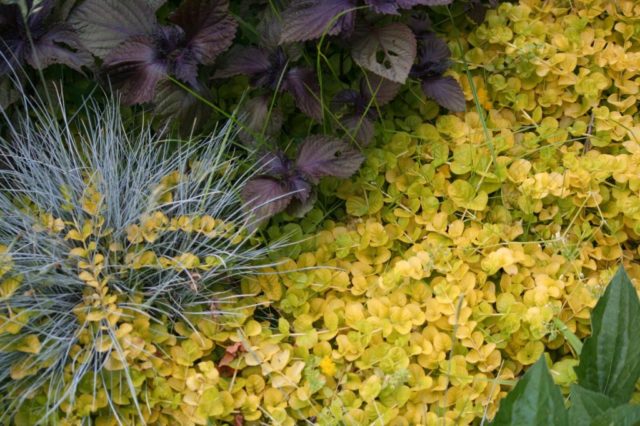
Aurea Loafers will help fill the empty space between the bushes - Loose mint Goldilocks. Its distinctive feature is multiple yellow inflorescences, which are several times higher than the number of light green leaves. The appearance of such a golden carpet is eye-catching. But for the saturation of the hue, the plant must receive a lot of light. It grows rapidly, is able to withstand slight drought, mechanical damage. Goldilox’s coin loosestrife carpet is even able to displace neighboring vines and other ornamental plants.
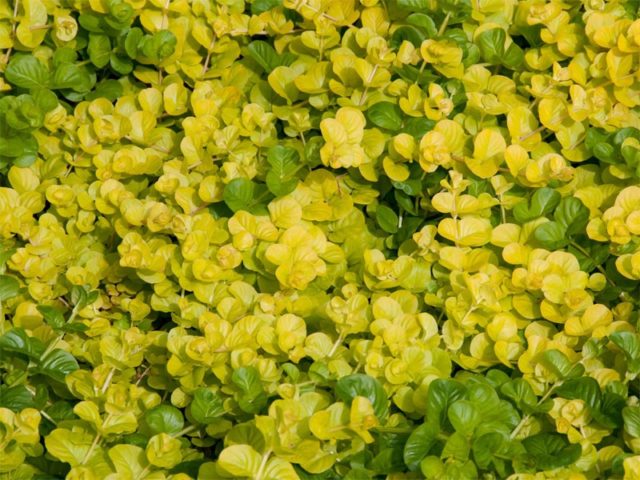
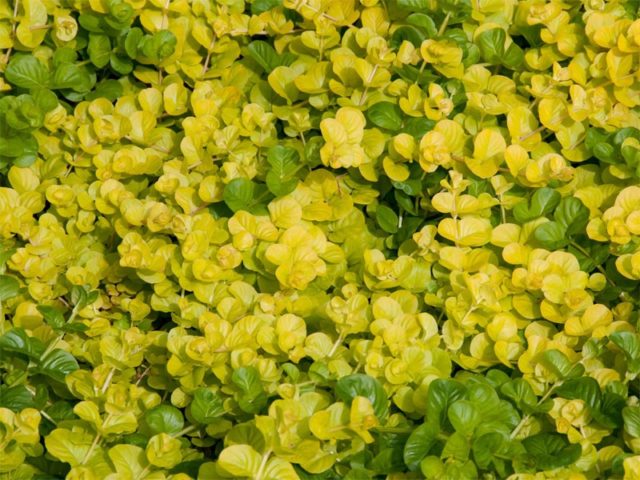
It is undesirable to plant Goldilox on the border with a neighboring site so that it does not climb into someone else’s possessions
Verbeyniki in the garden
Verbeyniki will find different uses on the personal plot. Ordinary and dotted will look good in a mixborder, the combination of their yellow inflorescences with blue flowers of bells and Veronica, as well as paniculate inflorescences of astilba of different shades is especially beautiful.
Verbeyniki on a flower bed
Ciliated loosestrife of the ‘Firecracker’ variety goes well with plants with bluish and bluish foliage: anaphalis, fescue, hostas, wormwood, wormwood. White V. cage is suitable for a white garden in combination with other white and silver plants, it will also look beautiful next to bright flowers.
Coin is good as a ground cover plant in a shady corner of a garden or near a pond – its creeping shoots will creep beautifully over stones and swim in the water. The loosestrife also looks great in pots, where it grows quickly and acts as an ampelous plant.
Loose leaf in a pots. Photo from the site farmer-online.com Choose your favorite loosestrife and decorate your garden with them!
Numerous species of loosestrife belong to the primrose family. They are mainly perennial herbaceous plants with yellow, white or pink flowers.
All loosestrife grows quickly and reproduce well by division. They can be cuttings by rooting young shoots. Lost weeds are shade-tolerant, but they love the sun very much; in the shade, some of them thin out and are less resistant to the onslaught of other plants. In comfortable conditions, on the contrary, they become aggressive and need to be limited.
Since the root system of loosestrife lies shallow in the soil, a 10–15 cm cultivated layer is sufficient for their normal growth. They do not require serious maintenance in summer and, under acceptable soil conditions, only need watering, especially in dry weather, and periodic addition of nutrient soil. Moreover, watering is best done by sprinkling until the top layer is completely saturated.
The leaves of the dotted loosestrife are oblong-ovate, up to 8 cm long. They are arranged in whorls and fit tightly to the stems.
Small stellate-bell-shaped flowers about 2 cm in diameter, with five golden-yellow petals and an orange spot in the center, are collected in axillary bunches, forming one very large spike-shaped inflorescence up to 40 cm long.
The plant blooms in late June and blooms for almost 6-7 weeks, sometimes until mid-August. In the midst of flowering, the top of the bushes looks like one bright yellow spot, almost hiding the leaves. The faded parts of the stems are cut off after flowering, which can cause re-flowering, which will be less abundant. And in the fall, the stems are cut out and the plantings are mulched with compost.
Reproduction
Reproduction of moneta loosestrife is possible by seed and vegetative methods. The latter is subdivided into reproduction by dividing bushes and shoots.
The seed method is used less often, since such a plant productivity is very low. After planting, flowering occurs only for 2-3 years. The seeds are placed in the soil in November or March. Plant seedlings must undergo a stratification process (hardening). If sowing is carried out at the end of autumn, then in winter stratification will occur by itself. But for planting in March, seeds for the winter should be placed in a wet mixture of soil and sand and removed to the basement or refrigerator.
Important! Only hardened seeds need to be used: a plant that has not gone through this process will not survive.
Loosestrife is propagated for seedlings in the same way, but only sown in a separate container with a prepared mixture of soil, sand and sedimentary rock. After planting, it is covered with glass or a transparent bag. The temperature must be stable, not less than + 15 ° C. The sprouts will sprout in 14 days. For some time they harden and when they become strong enough, they are transplanted into pots. In open ground, the transplant is carried out in June or July, depending on weather conditions.
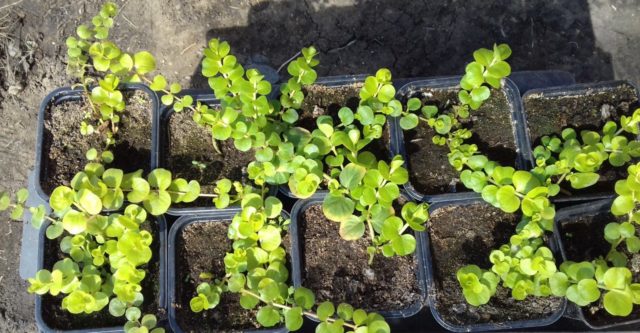
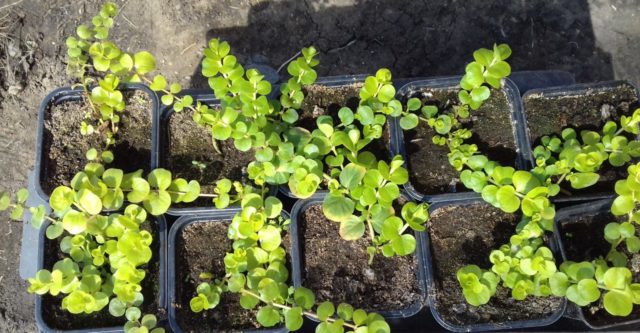
Shoots 7-10 cm long are ready for spring transplanting in open ground
Reproduction of loosestrife by dividing the bush is the simplest and most effective method, which gives an almost 100% guarantee for the germination of the culture. The division is carried out from a bush at least 3 years old. The procedure is carried out either in early spring or in autumn.
An adult plant is carefully dug out without touching the roots. Further, it is divided in such a way that each process has 2-3 shoots and a sufficient root system. The seedlings are placed in moist soil, trampled down a little.
Propagation by cuttings of shoots is suitable if an adult plant of the monkey loosestrife is at the house of friends, acquaintances, or just on the street. To do this, shoots up to 20 cm long are cut into an adult bush, placed in water. The process of root formation is so developed that you don’t even need to use the root growth stimulator “Kornevin”.
Important! There must be several buds on the shoot – growth points.
If the cuttings took place in the fall, the rooted shoots are planted indoors in a nursery. In the spring, planting is carried out directly into the open ground. Flowering begins next season.
Loose leaf herbaceous plants for open ground
For this reason, it will be useful to take certain steps so that it does not spread throughout the site, absorbing the rest of the plantings. The verbain is hardy and stable, it does not have a predisposition to any diseases that often affect green spaces.
The main trouble that can befall such a culture is the attacks of aphids.
This is evidenced by the stunted and unhealthy appearance of the plant. To cope with the problem will help drugs Biotlin or Antitlin, which are easy to purchase in a specialized store. Another problem, which will have to be faced only in rare cases, is the attacks of weevils.
They feed not only on leaves, but also on loosestrife roots and are activated at night, so it will be somewhat more difficult to deal with them. Insects will need to be collected regularly, and this should be done after sunset.
Due to its attractive appearance and unpretentiousness, the dotted loosestrife is very popular in landscape design. It is used to decorate flower beds, alpine slides and rockeries.
There are about varieties of this plant that grow in areas with temperate and subtropical climates. China is considered its homeland, where you can find more than 70 species of this flower. The culture is resistant to cold weather and can grow both in the shade and in the sun. One of the most common species is Lysimachia punctata. Spotted verbein is a weakly branched perennial with straight shoots that form tall thickets reaching a cm in length.
This plant gets along well with its moisture-loving counterparts, and most often it is planted in combination with the following types of crops: In addition, loosestrife has long been known for its healing properties. It contains useful components such as hyperin, rutin and phenol carboxylic acids, as well as tannins, carbohydrates and ozone compounds. In the video, the florist shows the spotted loosestrife and talks about how to properly care for this plant.
Infusions and decoctions from this plant are used for gastrointestinal disorders, skin inflammation, thrush, lung diseases and migraines. In addition, compresses soaked in fresh loosestrip juice will help reduce the pain of animal, insect and reptile bites and prevent complications. You should not be treated with loosestrife for those who suffer from blood diseases, thrombosis, varicose veins and atherosclerosis.
And also it is impossible to give remedies based on this culture to people suffering from hypertension, and children under 12 years old. Verbeinik is surprisingly resistant to all such problems. The only trouble that can happen to him is an aphid attack, but in this case, you can always buy an appropriate drug in the store – for example, Biotlin or Antitlin. As already mentioned, the loosestrife reproduces by seeds and vegetatively – by dividing the bush, cuttings and basal offspring.
But experience shows that vegetative methods of reproduction of loosestrife are more reliable than seed, especially since loosestrife from seeds blooms only for a year after germination.
Before sowing in late May or early June, loosestrife seeds must be stratified for one and a half to two months in a vegetable box of the refrigerator. Before sowing in the fall, there is no need to treat the seeds with cold – in the winter soil they will undergo natural stratification, and in the spring you will see friendly shoots.
In ten to fourteen days, seedlings will appear, and when they get stronger, they are dived into separate containers and, after hardening procedures, are planted in June in open ground, observing the interval between seedlings of 50 cm.In early spring or autumn, during transplantation, you can reproduce loosestrife dividing the bush. They dig out the loosestrife, separate the children, then divide the bush itself into parts so that in each division there are developed roots and shoots, after which all the parts are seated.
Planting and caring for a coin loosestrife
Monet loam is unpretentious in care. The first thing to pay attention to is the choice of the landing site. The culture loves shade and moist, loose soil. It will take root very well near water bodies, then a slight excess of light will not hurt. On sandy and heavy loamy soils, the loosestrife will not take root.
Important! Since the crop spreads very quickly, in order to avoid unnecessary overgrowth of roots, plant the loosestrife in a pot with a missing bottom.
Deadlines
Planting loosestrife in open ground can occur in late autumn or early spring. In the first case, young shoots spend the winter in specially prepared soil in the basement or vegetable section of the refrigerator. Seedlings are planted from May to August.
Landing algorithm
Before planting, the surface of the earth should be dug up, if the soil is poor in useful elements, it is important to add a little compost and peat. Dig a hole, the depth of which is twice the length of the roots, and if the planting is carried out together with the pot – to the size of the pot. Put a little of the prepared mixture of compost and peat on the bottom. Next, the loosestrife is placed in the hole, buried. Water it abundantly. When planting several plants, the distance between the seedlings should be at least 50 cm.
Planting and caring for loosestrife in flowerpots is popular among gardeners. The plant also needs frequent soil moisture and shade.
Features of planting a dotted loosestrife
When planning to decorate a flower bed or alpine hill with a loosestrife, it is important to remember that it is better to place this plant in the shade.
The soil should be fertile and loose, with a close occurrence of groundwater. In this case, its composition is not of fundamental importance, the main thing is that the clay content is not too high.
Before laying the seeds, the site will need to be fertilized with rotted manure or compost, this will help the culture to take root better.
Planting is done in the same way as in the case of any other plants. The material is placed in holes up to 10 cm deep, while the distance between them should be at least 50 cm. After that, the depression is thrown with soil, the surface is leveled and the garden is watered.
Necessary care
Crop care is simple. Make sure you have enough water in the soil, periodically apply fertilizer (compost will do) and trim dry or damaged shoots.
Watering and feeding
Loose loam, planted in constantly moist soil (for example, near a reservoir), does not require watering. It is required only during prolonged drought or excessive exposure to sunlight. In dry times, the plant may dry out a little, but after watering it will fully recover. Watering is carried out before the onset of heat or at sunset.
Fertilizing the crop is also optional. But if necessary, expressed in leaf tarnishing or a strong slowdown in stem growth, top dressing is carried out at the end of May or at the beginning of June. Any complex fertilizer for deciduous ornamental plants is suitable for this.
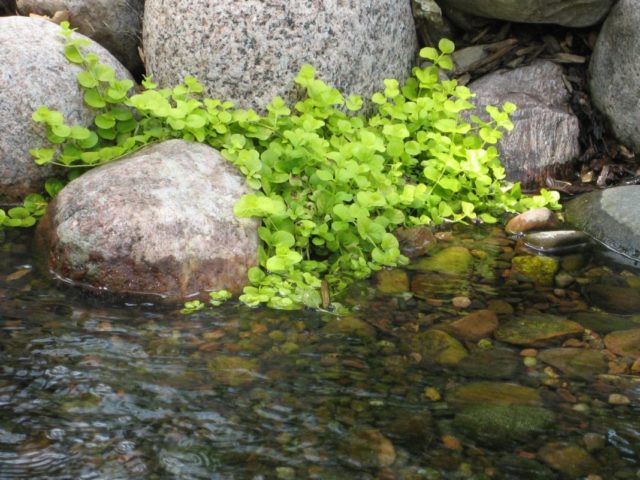
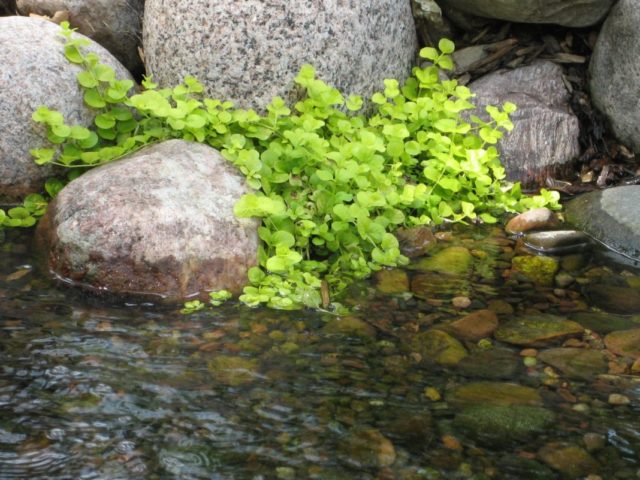
Favorite location of the coin loosestrife – at the edge of the reservoir
Weeding and loosening
Before planting the loosestrife, which will act as a lawn in the backyard, you should dig the soil around within a radius of 10 m, deepening by about 15 cm.This is necessary in order to remove the roots of the weeds. Also, once every few years, if necessary, you can thin out the shoots to reduce the growth of loosestrife.
Winter preparation and pruning
Before hibernation, the coin-shaped loosestrife is thoroughly fed. Humus and mineral fertilizers should be added under the root. Feeding with decayed foliage is also possible. Before fertilizing, the soil should be slightly loosened. Despite the fact that the plant is frost-resistant, with the onset of severe frosts without a snow cover, the monotonous loosestrife can dry out. Therefore, it should be covered with foil for the winter. If the region has a mild, snowy winter, they do not insulate the coin loosestrife.
For 10 years, the coin loosestrife has been growing and without control it can become a real disaster. Therefore, young shoots should be transplanted from the main bush in a timely manner. This takes place at the end of October. In addition, after the recession of the inflorescences of the plant and before the cold weather, a planned pruning is carried out.
Features of the loosestrife
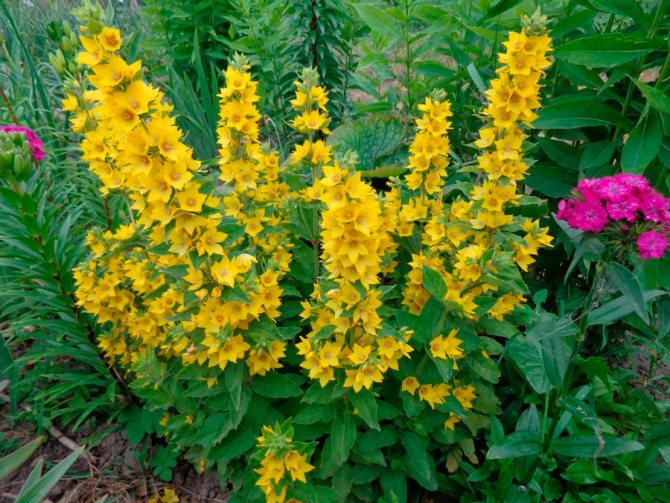
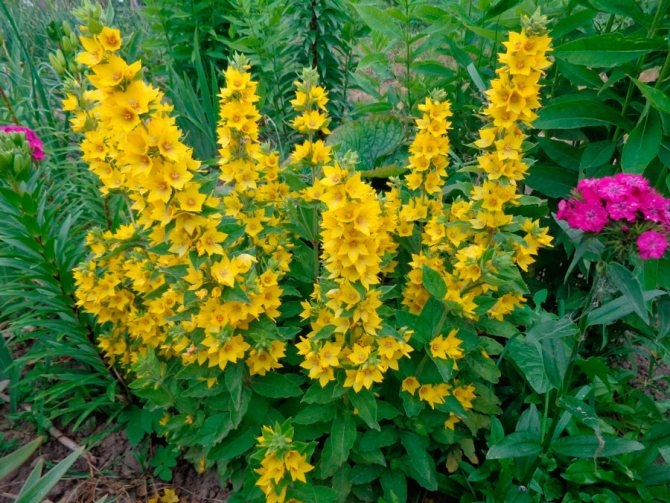
The loosestrife herb can be annual, biennial, or perennial. Shoots can be creeping or erect, and simple, entire, alternate leaf plates are opposite or whorled. Flowers can be part of corymbose or spike panicles, or be single axillary. They are colored yellow, white or light pink. The fruit is an egg-shaped or spherical capsule.
Verbeynik is considered to be a relative of crops such as the lactarius, primrose, cyclamen and ambilanthus. This plant is distinguished by its unpretentiousness and, despite the fact that it does not have a very spectacular appearance, it is quite popular among gardeners. The fact is that such a culture blooms very luxuriantly and for a long time.
Unpretentious plants for the garden Verbeinik dotted and others. Site “Garden World”
Diseases and pests
Loose worms are extremely rarely exposed to diseases and pests. Dangerous for him are:
- Powdery mildew. It is a white bloom that is characteristic of extremely humid climates or damp summers. Traditionally, copper sulfate and Fundazol are used against it.

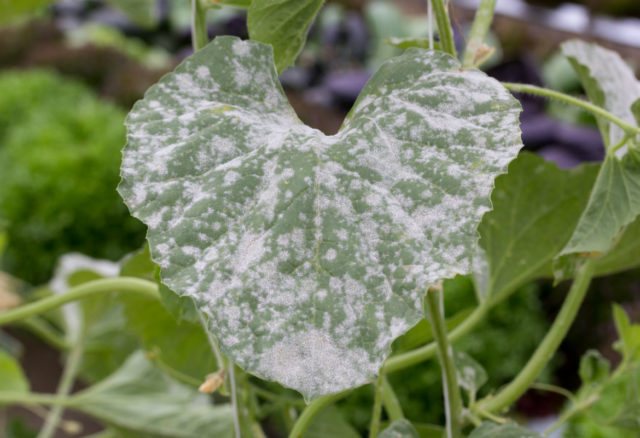
The name “powdery mildew” comes from the fact that drops are formed on the mycelium (white bloom) after the maturation of the spores, similar to dew - Aphid. These are small light green insects that feed on plant juices of plants, after which its fruiting decreases, the culture withers and may even die. Treatment with insecticides Biotlin and Antitlin will help.

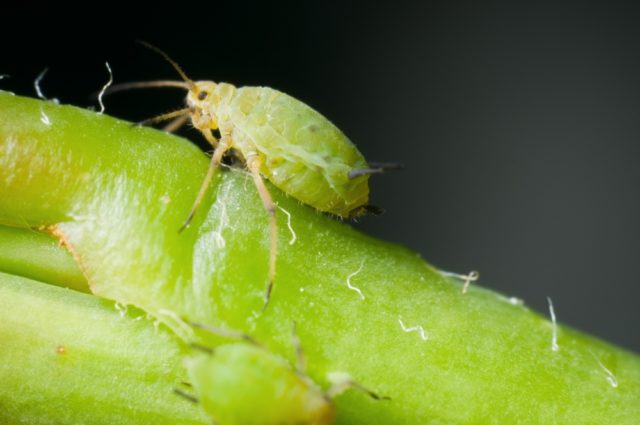
Aphids are only a few millimeters in size. - Slugs. They rarely infect the moneta loosestrife. They must be collected from the plant and treated with copper preparations.
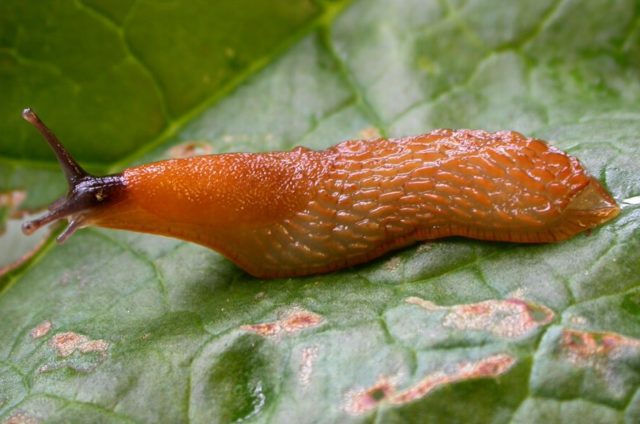
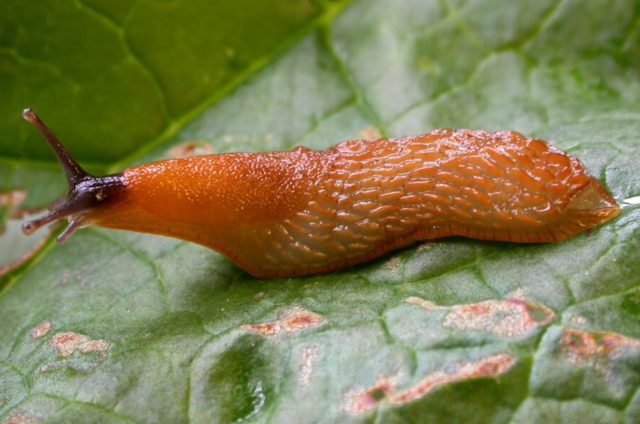
Slugs spread various types of fungi on the leaf surface.
Soil preparation for moneta loosestrife
Verbeynik is undemanding to the composition of the soil, the main conditions for its cultivation, moist soil
If the soil is poor, infertile, then before planting it can be fed with complex mineral fertilizer. But this is not necessary at all. Monet loam is undemanding to the composition and fertility of the soil. The main growing condition: highly moist, moist soil. Some gardeners plant the loosestrife directly in a decorative pond, to a depth of about 10 cm.
Medicinal properties and contraindications
The rich composition of trace elements has antibacterial, antiviral and hemostatic effects. Vitamin C together with routine helps to strengthen capillaries, normalize blood composition, and prevents it from thinning too much. It has a beneficial effect on the overall strengthening of the immune system. However, there are also contraindications for use:
- Dry cough.
- Phlebeurysm.
- Hypertension.
- The tendency to form blood clots.
- Vascular sclerosis of the extremities.
Medicinal sparrow: beneficial properties
Hydrangea blue or blue – planting and care in the open field
In traditional medicine, loosestrife is not registered as a medicinal plant, but, nevertheless, it is widely used in folk medicine. The leaves and flowers of the plant contain a large amount of nutrients. Due to the fact that this plant has tanning and astringent properties, it can be used for nausea and even diarrhea. A decoction made from the medicinal parts of loosestrife can also cope with diseases such as gastritis and even stomach ulcers.
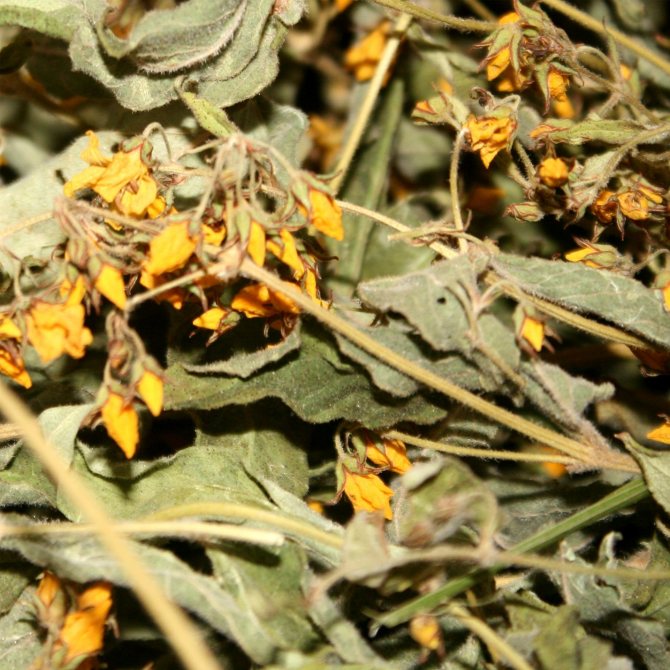
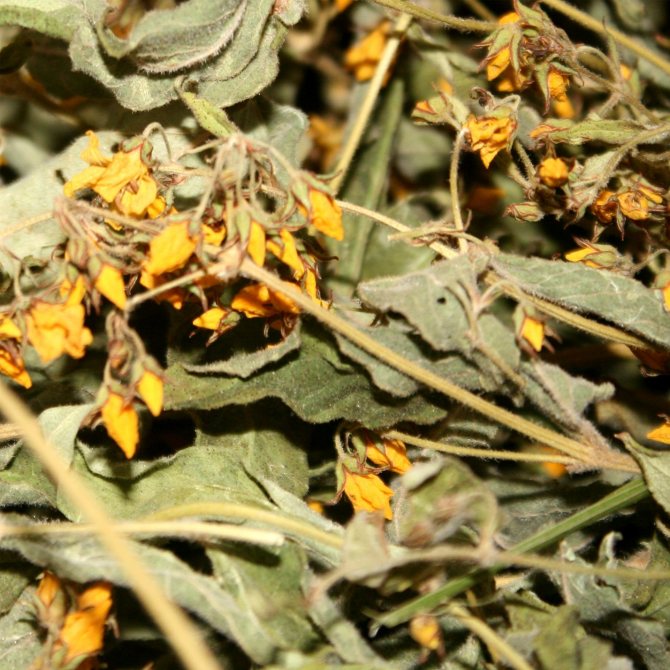
Dried leaves and flowers are great medicine
Most often, such a decoction is used in case of the formation of wounds on the body. Good for rheumatism, arthritis and hemorrhoids, not to mention bruises. Looseweed tea is excellent for getting rid of coughs and colds.
Important! Thanks to the vitamin C contained in the plant, the immune system improves.
Prepare tea as follows: add 2 teaspoons of dry flowers and leaves to a glass of boiling water. Let it brew for five minutes and strain. The medicinal infusion is prepared from 1 tbsp. tablespoons of dry ingredients and a glass of boiled water. You need to insist at least two hours. Drink the medicine four times.
Note! A contraindication to use can be only when a person has an allergic reaction to this plant.
Application
Earlier, the coin loosestrife was used as tea, since then it is also known as meadow tea. It was used as a prophylaxis against scurvy in the winter. In addition, the coin loosestrife is useful for such diseases:
- Disorders of the gastrointestinal tract.
- For headaches.
- With rheumatism.
- With vitamin deficiency.
- With a wet cough and shortness of breath.
- For skin diseases.
In folk medicine, there are decoctions of leaves that have an anti-inflammatory effect. A compress from the leaves will relieve skin irritations, fresh juice will help with insect bites. Powder from the roots is used to eliminate bleeding. On the basis of the loosestrife monkey, they are developing products for the care of problem skin of the face, to combat acne and acne.
Important! Monet loam is also used as a dye: green is obtained from the leaves, yellow from flowers, and black from roots.
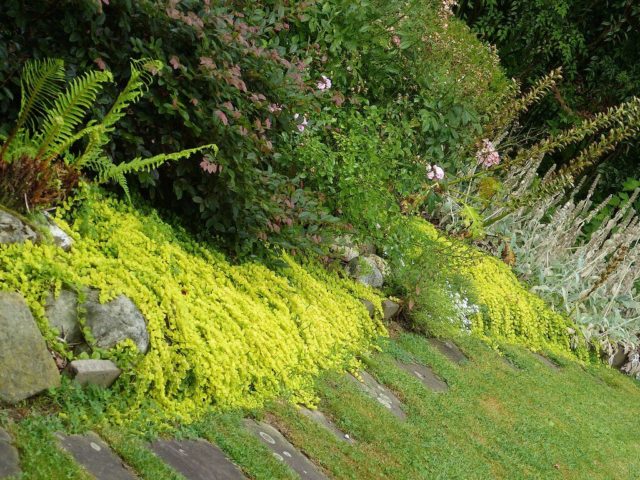
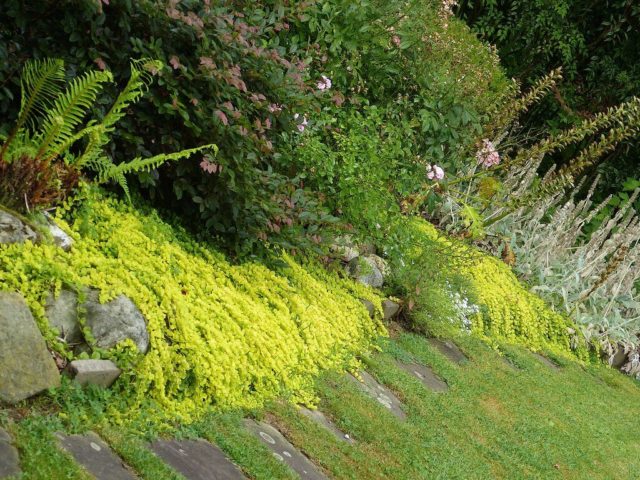
To prevent the spread of the coin loosestrife, you can protect its planting site with slate or stones.
Verbeynikovy lawn and other “things”.
I repeat, the coin loosestrife “Aurea” is valued among designers even where the species richness of the flora is many times greater than ours in Russia. Its colorful, golden spots are good in the foregrounds of compositions, in the form of ribbons along the edges of shrub groups. Small loosestrife rugs, to enhance the color, are also introduced into complex plots. It is especially effective when used as a background in mixed compositions with conifers and shrubs. By contrasting the main players, the loosestrife enhances the impression made by the composition. By the way, it resists stray weeds well, thereby reducing labor costs for care.
In this case, one should take into account the habit of loosestrife to creep. It is advisable to give it those places where there are natural barriers to its expansion. Sometimes the loosestrife is assigned the role of the only participant in the composition, with the function of a substitute for the lawn. An extensive, about half a hundred, loosestrife carpet in front of the facade of a freestanding store or office, with all its minimalism, looks self-sufficient. And if you spread several large boulders or debris on it in an “artistic disorder”, then you don’t have to travel to Japan to gaze at their extravagant Ryoanji rock garden. It is also attractive that such a work practically does not need maintenance.
The same, but in a more modest size, can be done in a window among the paving slabs or in a flowerpot. And an abandoned area overgrown with weeds along your fence can be turned into an exotic “evergreen” lawn with the same technique.
Continuous turfing of the foothills of shrubs growing sparsely in open places may also be a good solution. For example, it can be a garden of low varieties of conifers (thujas, spruces, junipers, etc.), the gaps between which are completely given to the loosestrife.
Articles about the Verbeiniki plant in an ornamental garden
Categories
Gardener_Bulletin, All_Articles, Decorative, Beautifully flowering, Groundcover
Vegetative breeding method
The plant is divided both by the bush method and by the rooting of shoots. The bush is divided in such a way that the parts used stand out with a strong and developed root system. As a result of the division of the main bush, it remains to plant new shoots. Care for them should be minimal, the first inflorescences can be expected in a year.
Among gardeners, propagation by cuttings is often used. To do this, cut off several healthy cuttings from ten centimeters long. Rooting is carried out with the onset of the first autumn or spring days, since shoots are placed in the ground that were removed after the planned pruning of the plant.

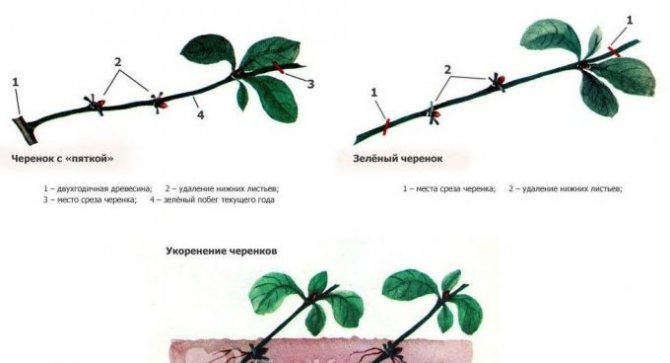
Prepared cuttings are immersed in a reservoir of water until the first roots appear. Then a separate part of the plant with formed roots is planted in the ground. It must be porous and saturated with moisture. For planting, the lightest areas are selected.
